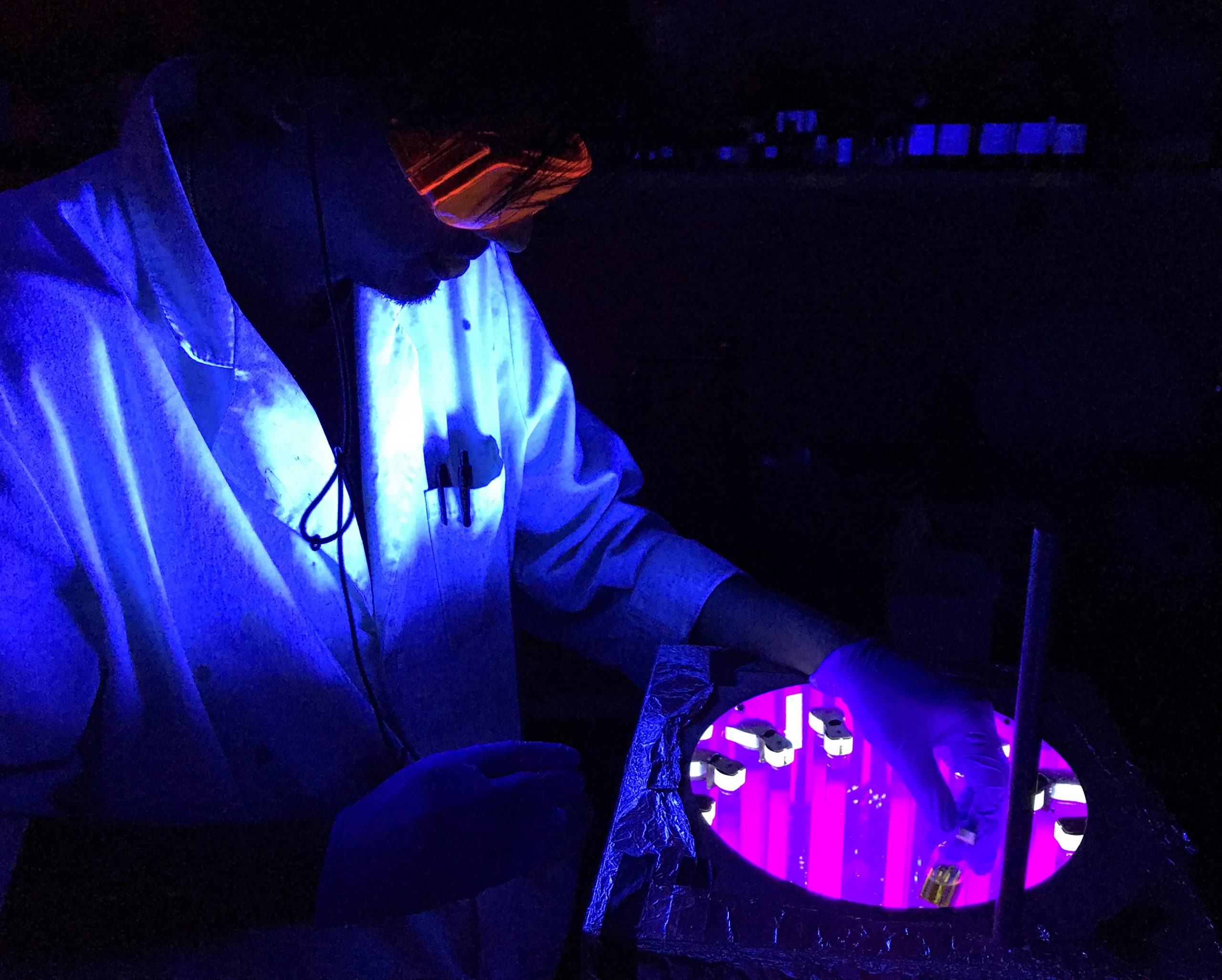Florida Tech Team Helping Lighting Up Brains
The human brain is the most complex organ in the human body. It is composed of over 85 billion neurons, and each of these neurons can be linked through up to 10,000 connections, known as synapses. Synaptic connections act like brain “switches” and release small molecules, called neurotransmitters, that transmit electrical signals.
Glutamate, or Glu, for short, is the most common neurotransmitter. To aid neuroscientists in mapping the enormously complex brain circuitry, researchers have used light to activate inactive, or “caged,” neurotransmitters in live brain tissue, including glutamate.
Glu plays a critical role in brain activities related to emotion, cognition and memory. Therefore, neuroscientists are working to decode the brain to understand neurological disorders including depression and dementia – in part by studying “glutamatergic receptors,” where Glu is the molecule of interest.
Researchers at Florida Institute of Technology have developed the fastest method to date for creating a key molecule used, in collaboration with Columbia University, in mapping brain activity. They also discovered ways to create two new alternate versions of the caged Glu molecule that can further advance this critical field of study.
This work, funded by the National Institutes of Health (NIH), was published in the American Chemical Society journal, ACS Chemical Neuroscience 2018.
“Our molecules to the neuroscientists are as valuable as cameras are to Google Maps,” said Nasri Nesnas, a professor of chemistry at Florida Tech who is principal investigator and corresponding author of the paper. “We now have the fastest method to make the best cameras.”
The work reported on in ACS Chemical Neuroscience will make the process of making caged Glu more effective, Nesnas said, by cutting the number of steps in half and overall time by 80 percent, while doubling the yields of previous methods.
“There were challenges that many scientists had with making these photo-responsive Glu tools. We have made this process more facile and efficient. We also made two other variations of these tools that have the potential to perform better since they may not pose the same interference problems that the previous one had with other receptors on neurons,” Nesnas added.
Graduate student Charitha Guruge, the lead author of the paper and one of four Florida Tech Ph.D. students involved in the research – Yannick Ouedraogo, Richard Comitz and Jingxuan Ma are the other contributors – said he is excited about developing tools that should lead to better understanding – and thus possible cures – of some of the most perplexing and damaging ailments of our time.
“I find working in this area to be truly rewarding, since there are too many neurological disorders, especially those relating to depression, dementia and bipolar, far from being understood,” he said. “I would like to be able to use chemistry to develop these tools to help the neuroscience community reach answers quickly.”
Nesnas reached out to other neuroscientists at a recent NIH symposium, and several expressed interest in the new photoactive tools for studying other unique biological pathways.
Inspired by this work, Guruge branched this work out into a new area by which he designed a catalyst that can be activated with light to kill bacteria.
“It is very encouraging to see students genuinely engaged in the intricate details of this research and who are inspired to come up with new ideas,” Nesnas said.
Florida Tech’s Department of Chemistry has recently expanded and now includes biomedical engineering, chemical engineering, biomedical sciences and chemistry. The newly formed department, headed by Ted Conway, is poised to become the breeding ground for powerful cross-discipline collaborations among faculty.
“We would like to be at the forefront of research, and we recognize that bringing biology, biomedical, chemistry and chemical engineering disciplines together under one umbrella will help fertilize the ground to sprout new fields of research,” Conway said.
Nesnas learned the power and importance of collaboration from a key figure in his education.
“The cherry on the cake was that our work was accepted for publication in ACS Chemical Neuroscience on May 11, which was the 93rd birthday of my postdoctoral advisor, Centennial Professor Emeritus Koji Nakanishi,” he said. “It was in his labs that I began my long-term collaboration with neuroscientists as I developed expertise in light-absorbing molecules. As such, I dedicated this publication to him on the occasion of his birthday.”
###





